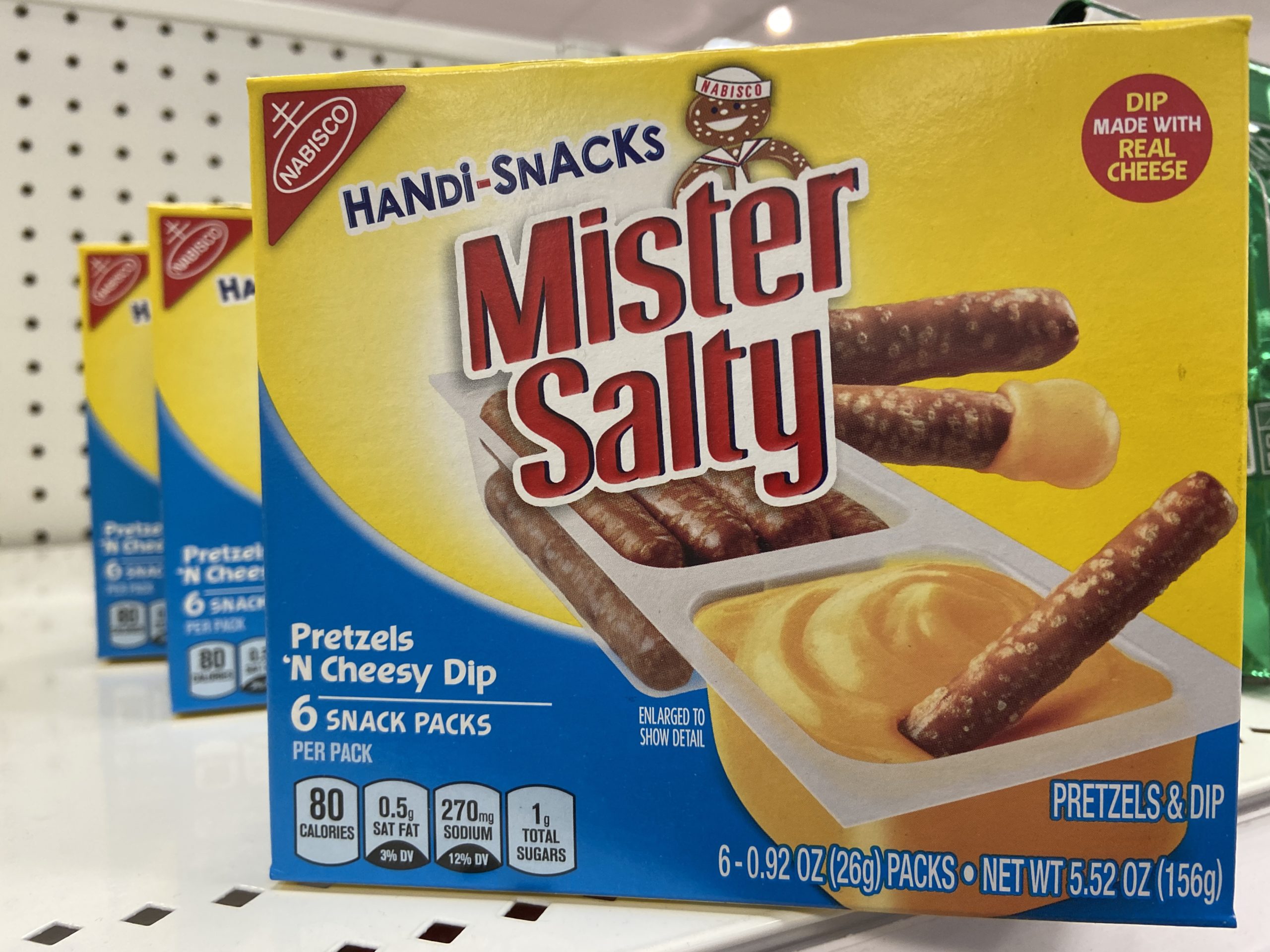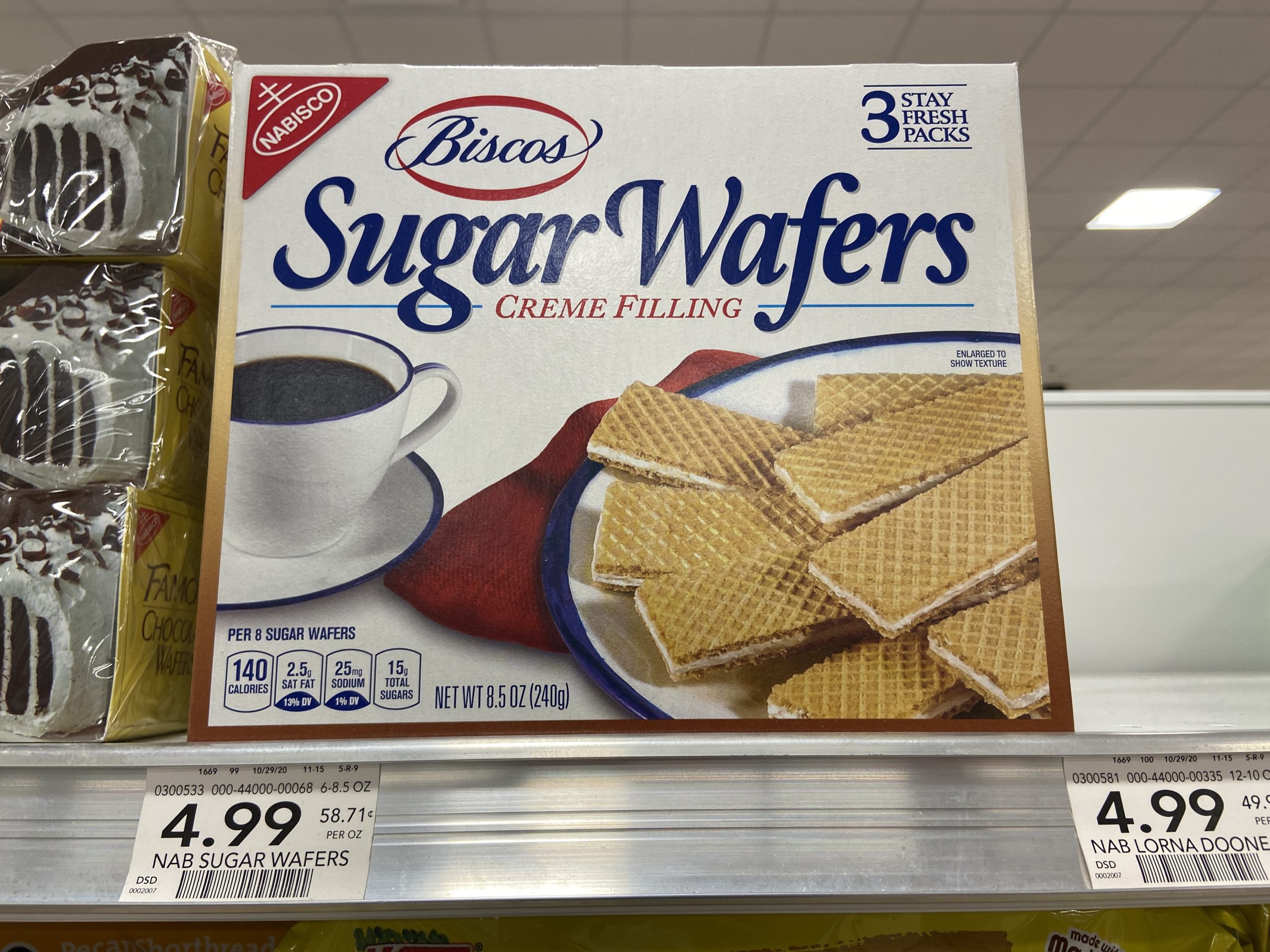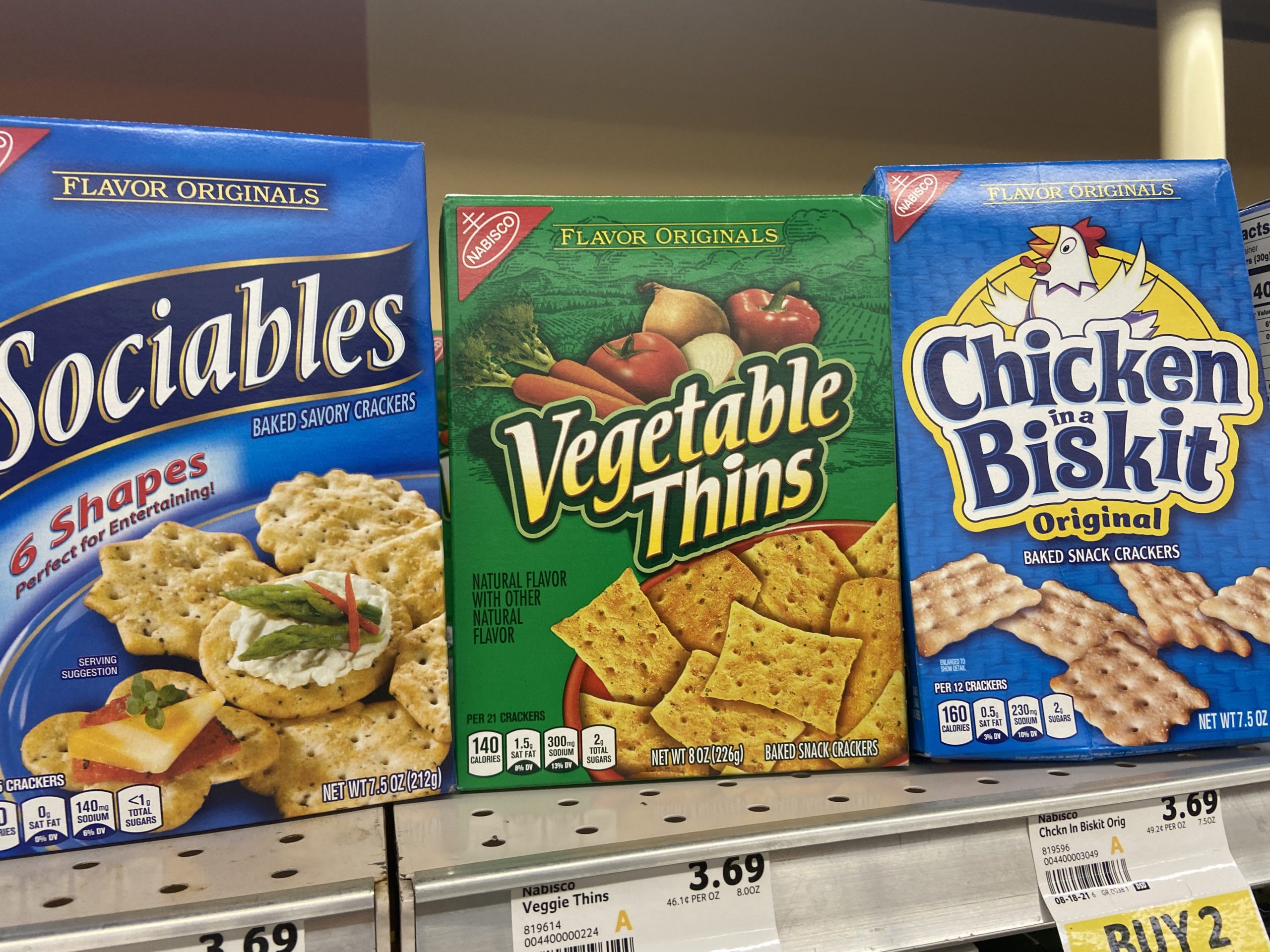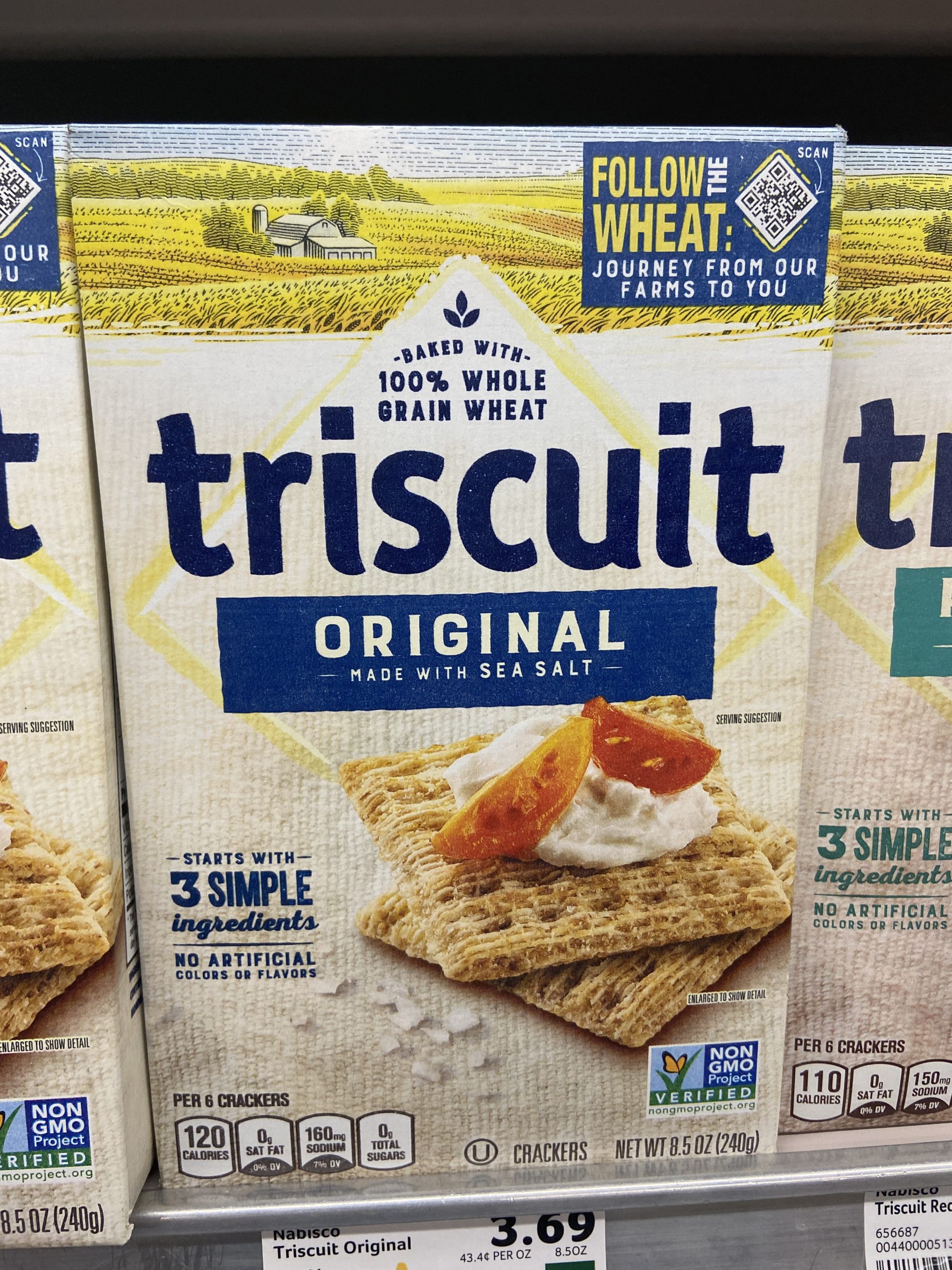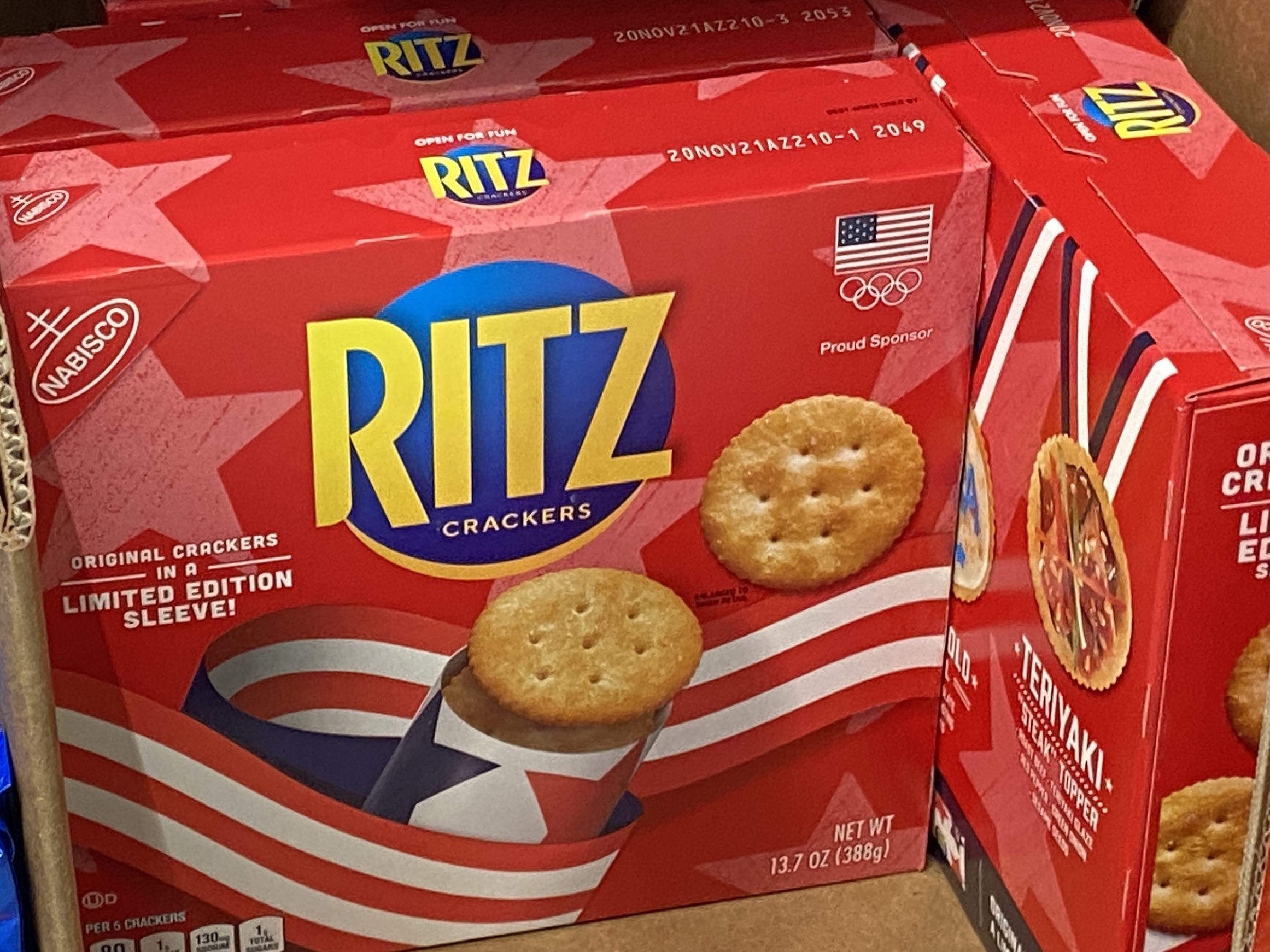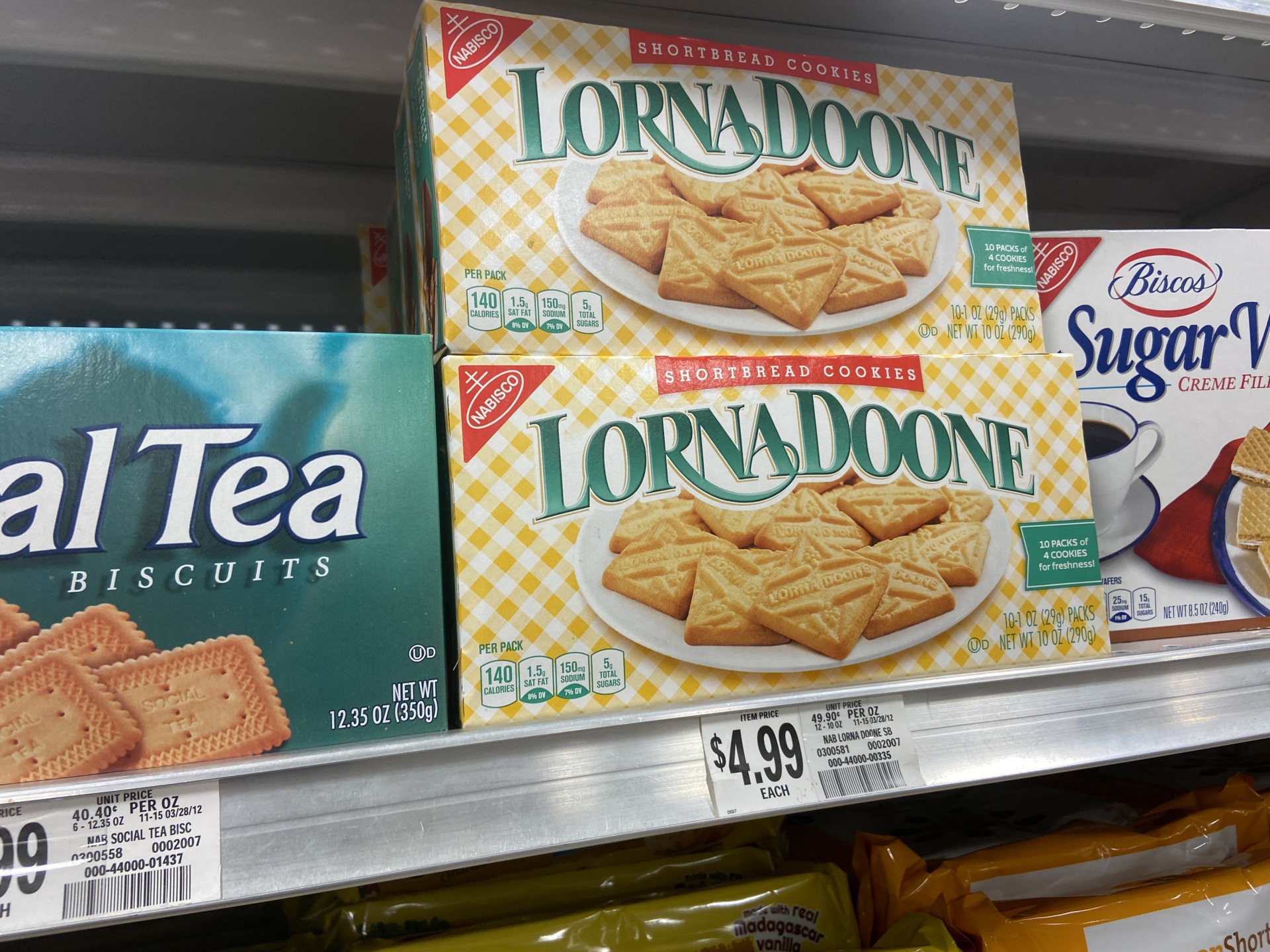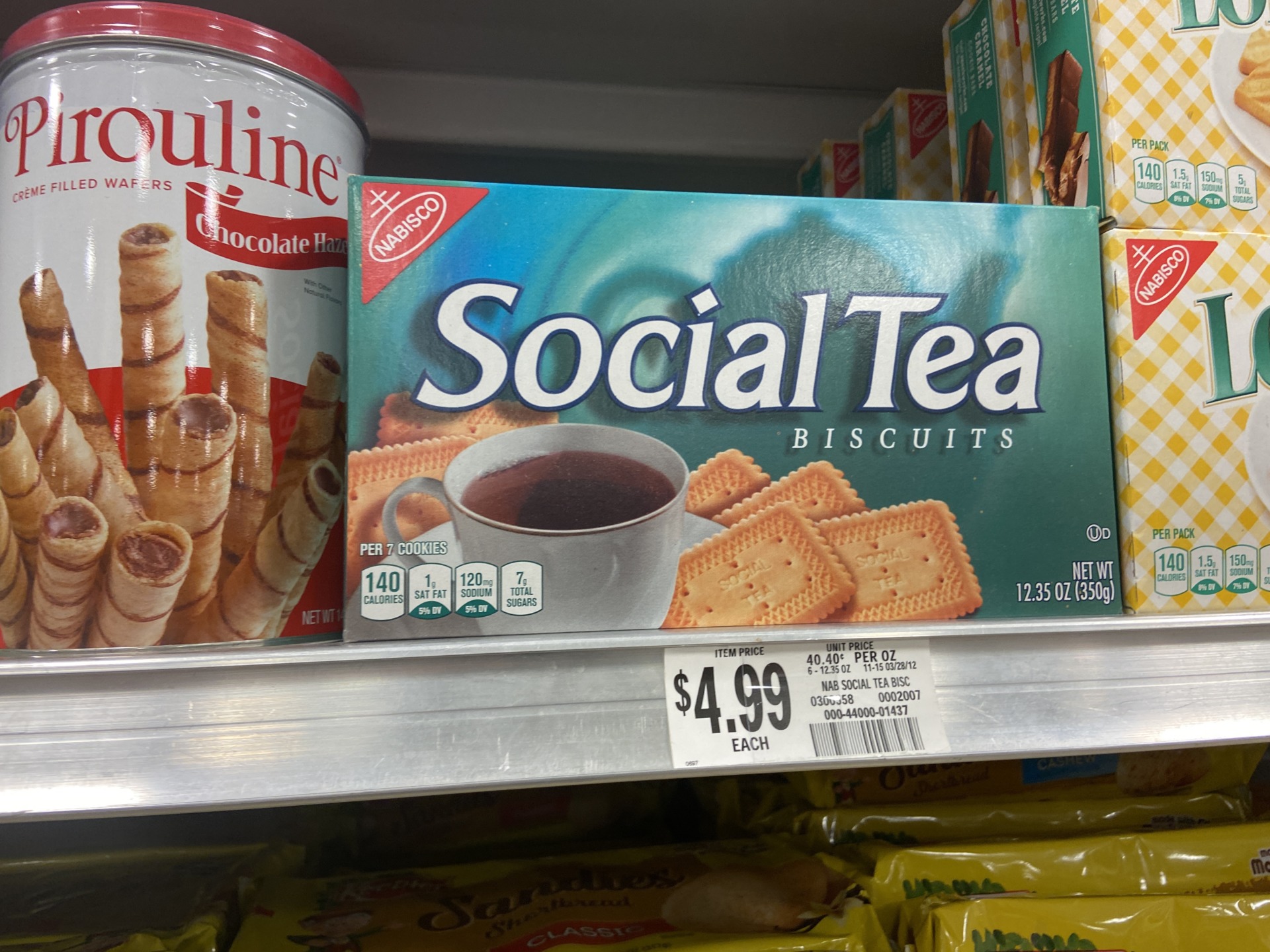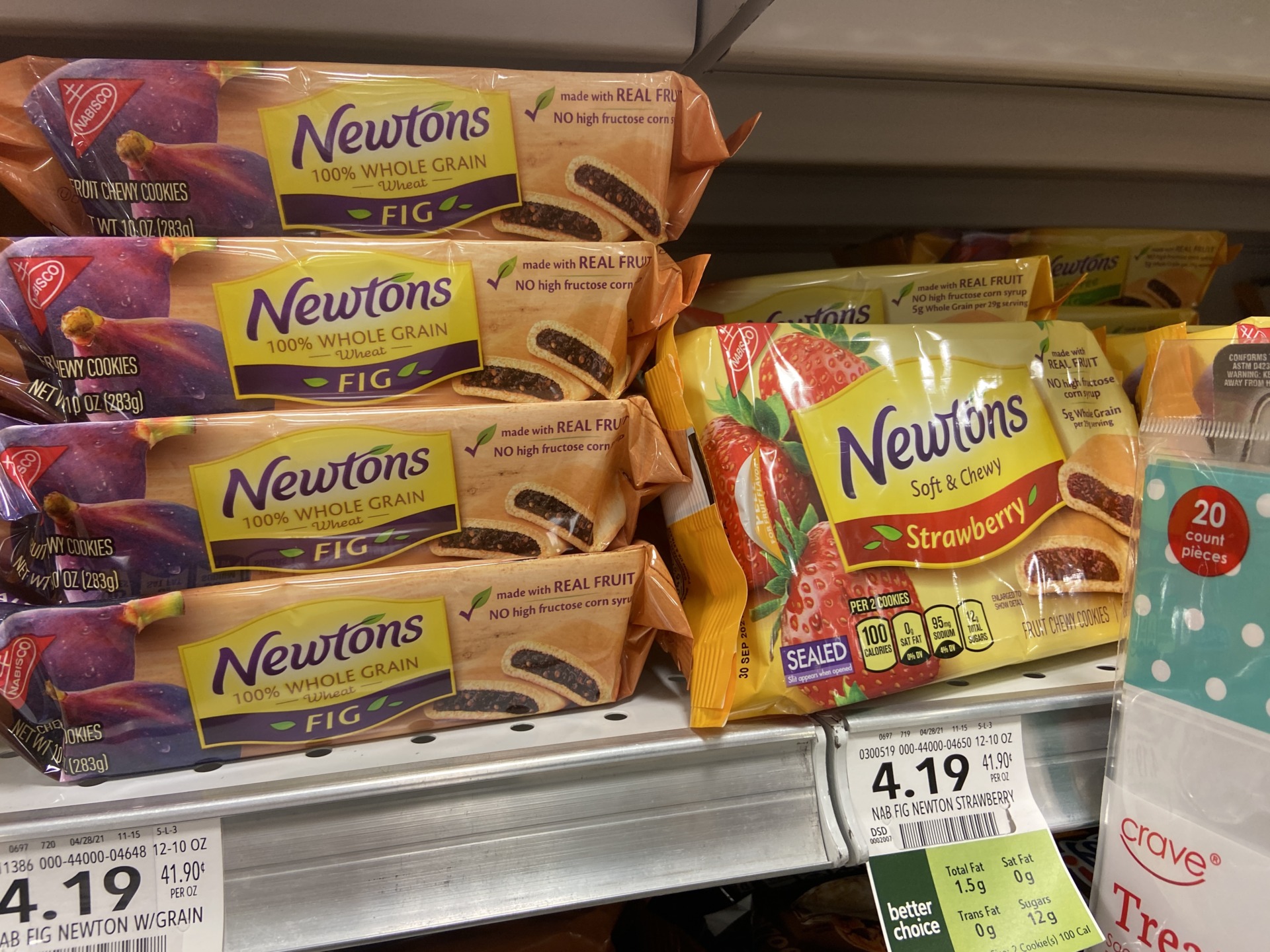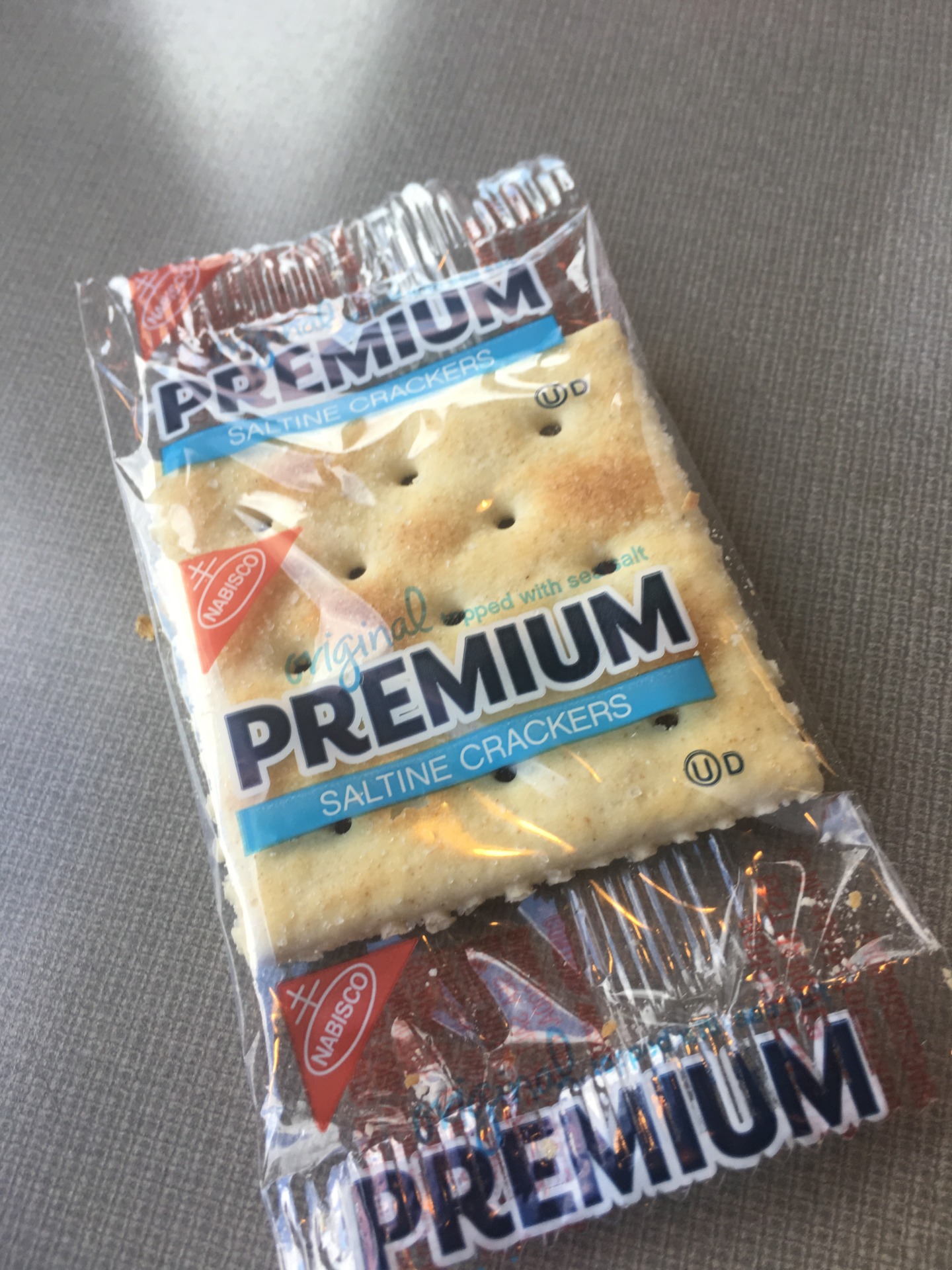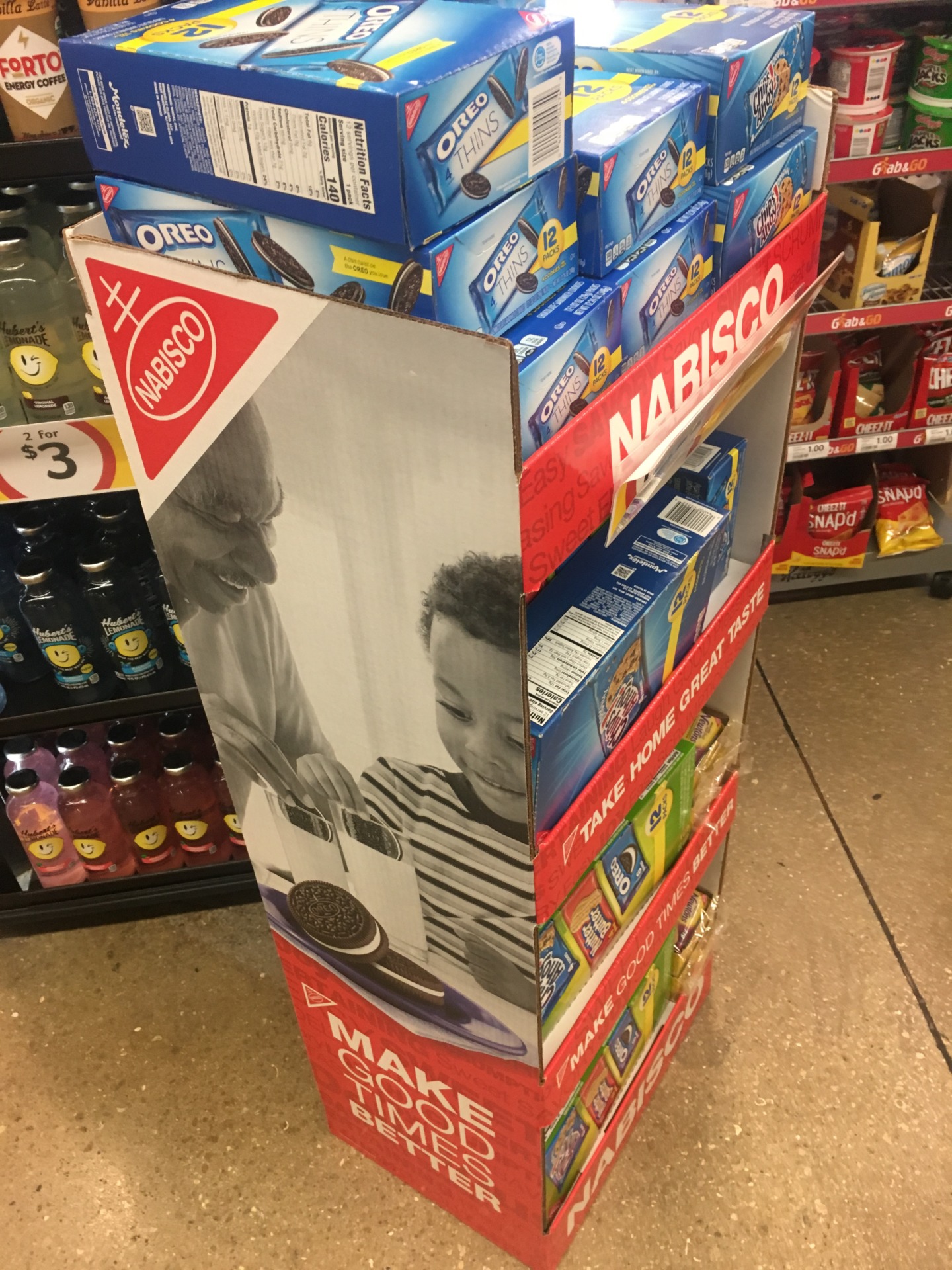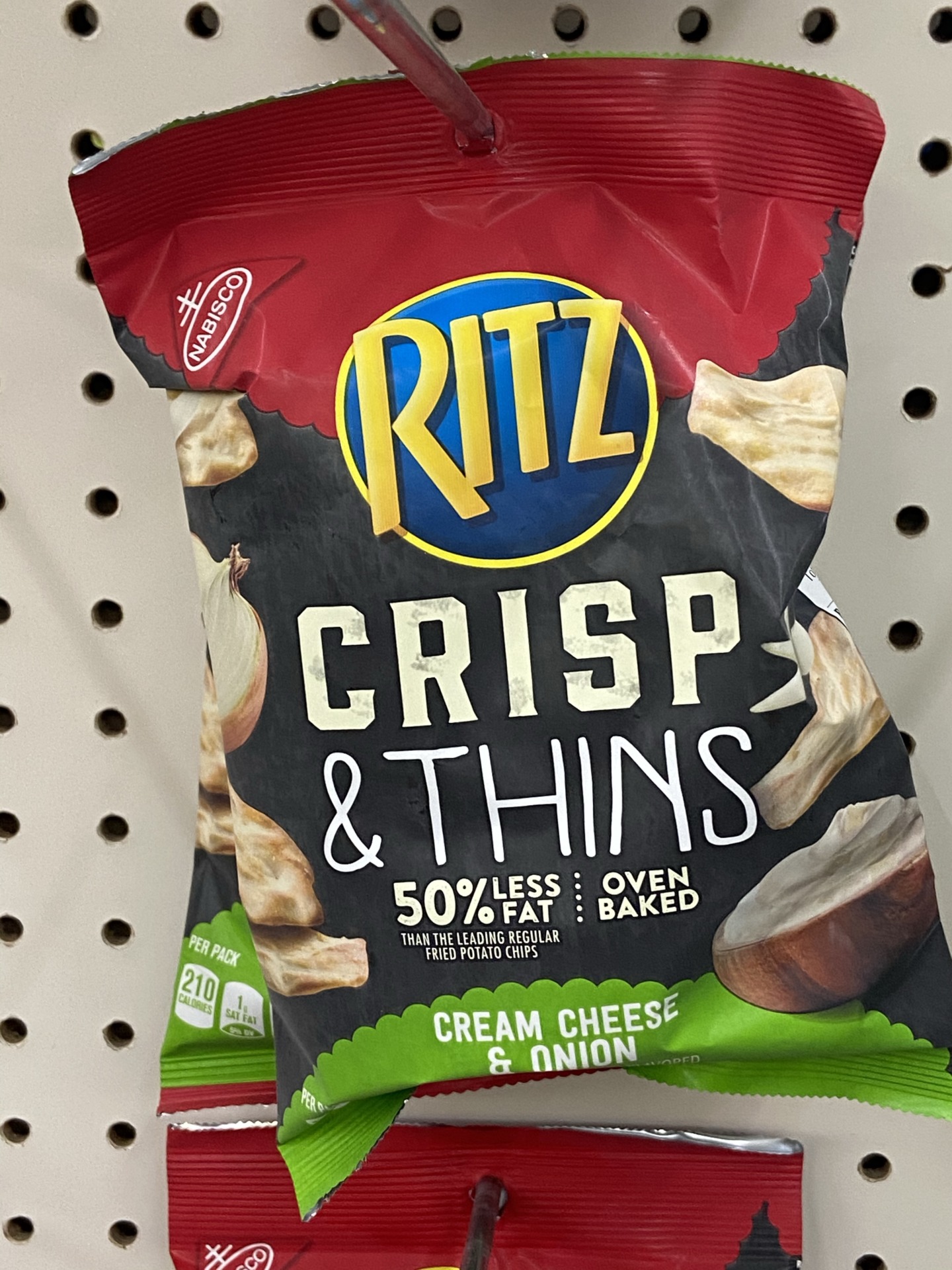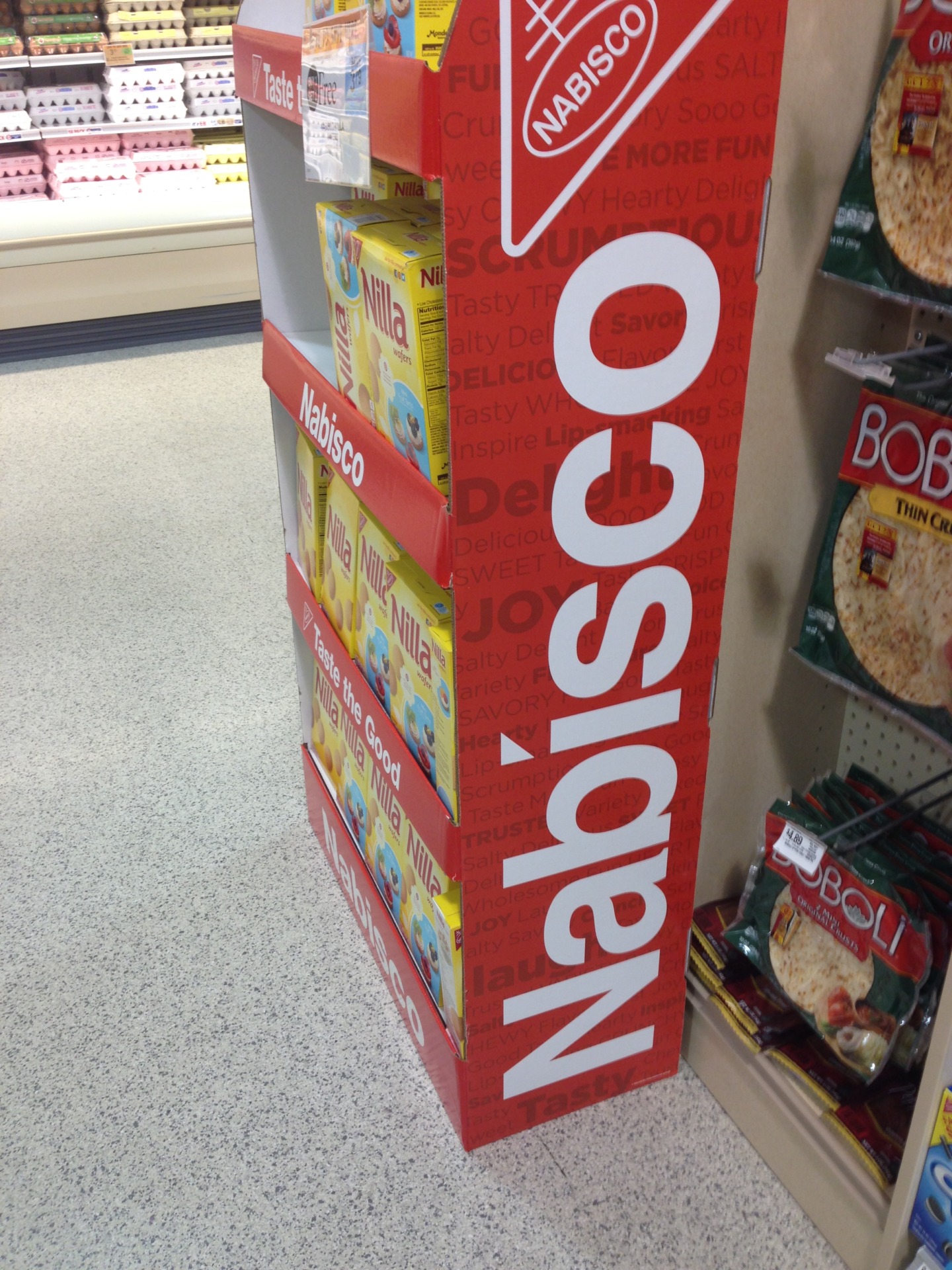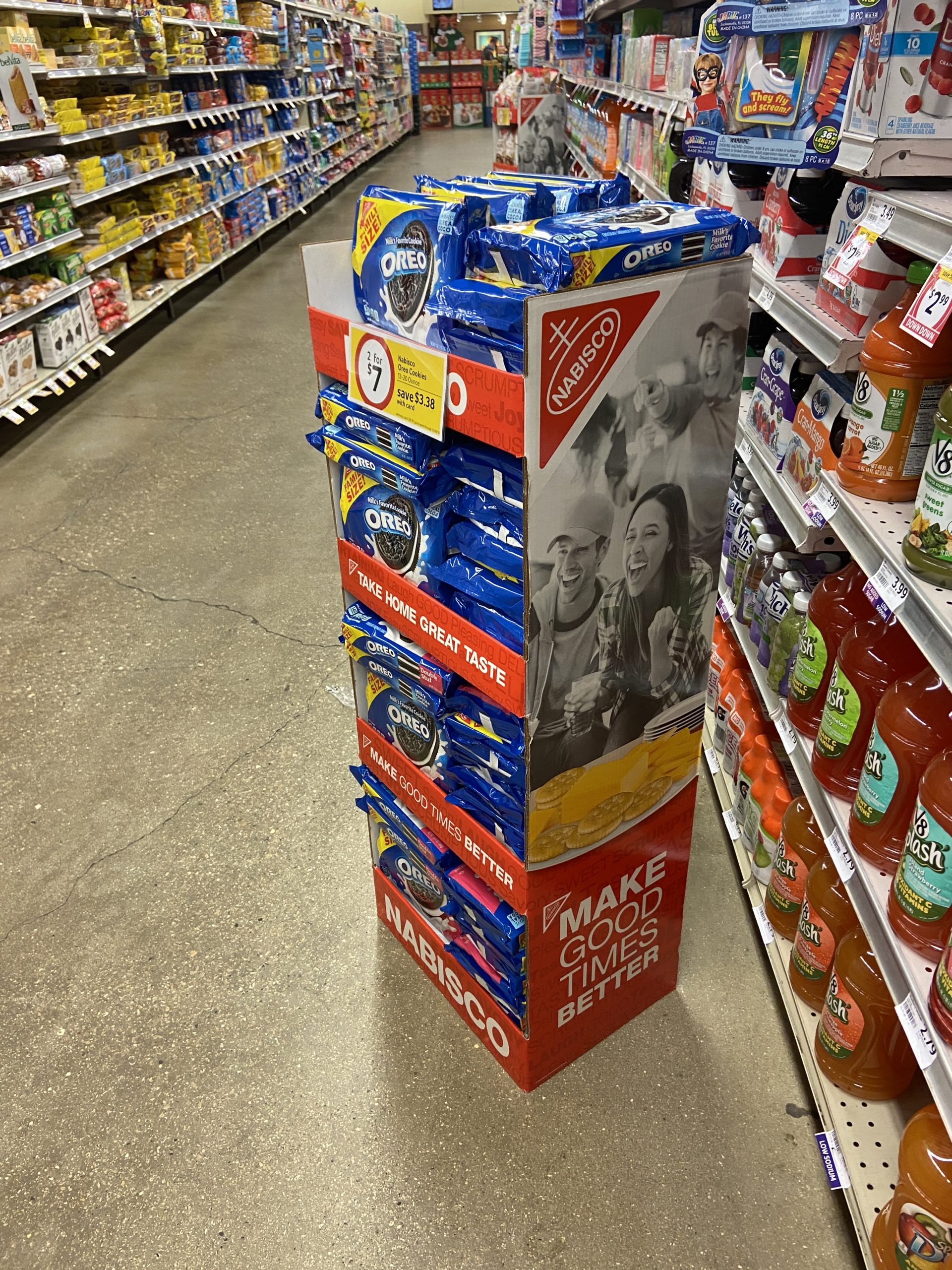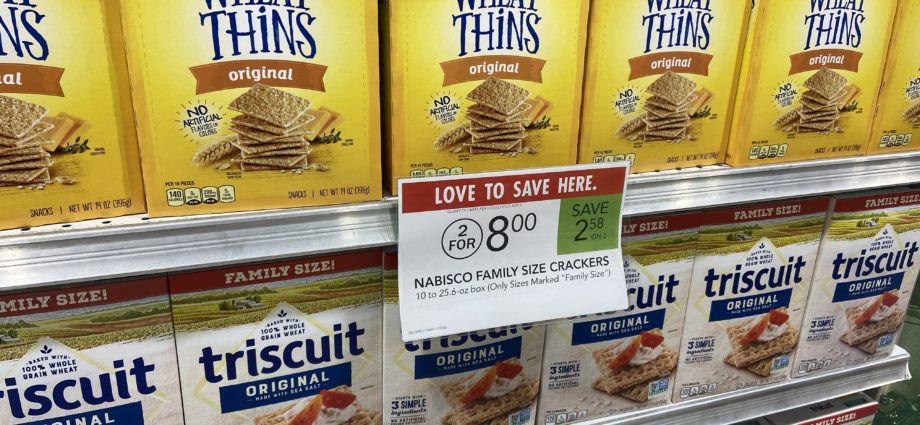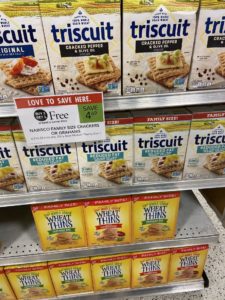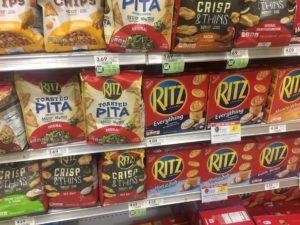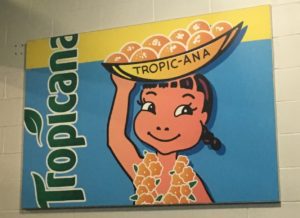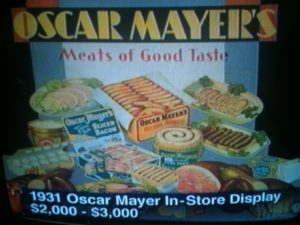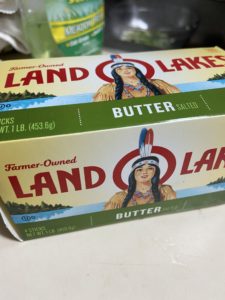In the last decade, the owners of the Nabisco brand have played with the idea of taking the familiar red corner off of their packaging. This is unfortunate, as the Nabisco name is one of the nation’s best known, and best-trusted grocery brands. And the red corner is as well recognized as other red brands, including Coca-Cola and Levi’s.
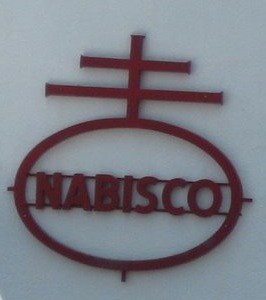
Nabisco is so well-known, and loved, that it can do one thing that many product brands cannot do. It can serve as a brand even when it is not on the box. In the photo above, Nabisco products dominate an end aisle at a Publix in Placida, Florida. Note that the Triscuits do not have a Nabisco logo, but the Wheat Thins do. But the Triscuit brand (unfortuate in lower case) still keeps the Nabisco halo, as the sale tag reminds customers that Nabisco products are 2 for $8, and the customer and clerk know well that a Triscuit is always a Nabisco product.
The first disappearance of the Nabisco brand was in 2009, when the red corner left the Wheat Thins cracker. These product packaging games became more regular by 2021, when Triscuit continued to exist without the red corner, and moved away from minimalist packaging. Today, the Nabisco brand appears nowhere on the product, in some cases.
Generations know the slogan “there is quality in our corner” even though the phrase has been disused for decades.
Nabisco Seal Has European Origins
Americans see the Nabisco logo so much they take it for granted, but it bears dissecting. The Nabisco orb and cross is actually a stylized Tolkein-like orb and cross. But it is not actually something religious; it is two lines above an oval, with the Nabisco word inside it. It has a deco feel, thought its styling is something of a cross between a cattle brand and a Plantagenet illustrated manuscript. The brand’s regal presence is further enhanced by the bold Nabisco red, which is also reminiscent of the House of Plantagenet line, which ended with Richard III.
The Nabisco seal comes from a pressmark from the Venetian printers Nicolas Jenson and Johannes de Colonia, around 1480. That according to the seminal book Signs of America, by Hal Morgan. The original logo had INER SEAL in it to indicate that the product was sealed in a wax paper bag inside the box. It became the company’s trademark in 1900, and appeared on the company’s first product as its own entity, the Uneeda Biscuit. The designer Raymond Loewy updated the logo in 1952, to be used on all Nabisco packages. Loewy featured it in his book of his life’s work, entitled Industrial Design.
Crown Pilots dated from 18th Century
The Nabisco antecedent was the Pearson & Sons Bakery of Boston, makers of what became Crown Pilot biscuits. The company, through mergers, included such companies as the Josiah Bent Bakery and New York Biscuit Company.
The original product Crown Pilots were made on and off until 2020. The crackers, sort of hard tack for sailing (with minimal salt), were staples in most households and deemed essential for clam chowders and stews.
Mondelez would do well to revive Crown Pilots seasonally, perhaps using both the Nabisco brand and the Pearson & Sons identity. Consumers have re-appreciated the small bake shop with the electric success of Tate’s Bake Shop, a small brand purchased by Mondelez. A niche promotion, targeted to wealthy New England enclaves and locavore seafood restaurants, would easily reinvigorate the brand as the only pure cracker acceptable for summer chowders and the like. Perhaps the company might establish a small niche bakery in a resort town, and go back to the brand’s earliest days? It could then bring the mass product back out in factories.
Through the decades, Nabisco has changed. Nabisco cookies, like Oreos, Chips Ahoy, Fig Newtons, and Nutter Butter, have gained on the standard Ritz, Premium, Saltines, Chicken in a Biskit, Wheat Thins and Sociables. Niche products still survive, including Mister Salty (the sailor on the package has Nabisco in his hat, where the ship name would be). There are also oddball survivors like Lorna Doone, and Social Tea cookies. These brands help Nabisco own the cookie and cracker grocery aisle, without having to have umpteen product extensions of Oreo and Ritz.
One of rare brands to actually be called Nabisco were Nabs, the small cheese crackers sold in gas stations. Campbell’s Lance dominates this filling station cracker market, with its Nip Chee and Rye Chee, but in many places these Lance crackers are still called Nabs, after Nabisco, out of habit.
Nabisco as a brand has the ultimate cachet of being something exclusive, yet something eaten by every class. While only very socially secure households would deign to serve Ritz crackers at cocktail time, Nabisco products are in every household, irregardless of income.
At one time, the company brand was a tool used by consumer manufacturers to extend the halo of good products on other good products. Brands like Nabisco, General Foods, Procter & Gamble, Kellogg’s and General Mills allowed the new products to bear the cachet of older, successful products, without directly connecting them to the old products, or stretching their product identities too thin. This prevented the current scourge of brand extensions.
The company brand was not just in the grocery aisle; toy companies like Milton Bradley, Parker Brothers, Kenner and Wham-o all gave the consumer an idea of a type of product, all the while allowing each product to be completely different. A record label, too is the perfect company brand; Columbia Records, under Clive Davis, perfected the art, with artists as varied as Barbra Streisand, Chicago, Billy Joel and Earth Wind & Fire under the same banner and red seal. Movie studios are the ultimate company brand, where dissimilar movies are all bundled under the same banner. While brand extensions can be sometimes useful, their excess, in cases like Tide and Cascade, means that grocery aisles are filled with the same product, over and over.
Broadcasting was and is the perfect venue for company brands; a program during TV’s golden age could be sponsored by a company, and then various products would be advertised, all with the company tagline at the end. This TV and radio marketing not only served the needs of the consumer, who had an idea where the product came from, but it served the stockholder, whose collective investment (and ticker familiarity) stayed at the forefront of the investor class while they consumed the product. As product origin and safety continue to drive consumer preference, this strategy is still valid, though implementation has changed because of streaming.
Read BrandlandUSA’s Six Rules of Company Brands from 2007.
Nabisco is the ultimate best case usage of a company brand.
Below, some versions of the Nabisco logo as it is seen today in supermarkets. The brand is useful for both cookies and crackers. Mondelez has not restricted the brand to being either savory or sweet. They known that Nabisco, as one of the great American names, has the ability to be both, as long as the product is tasty, and it is baked.
